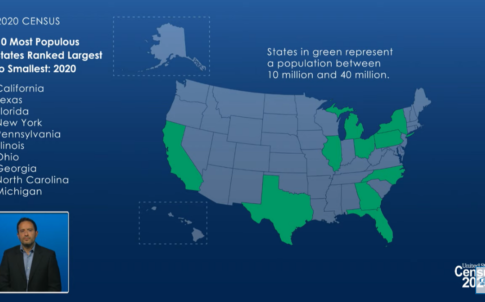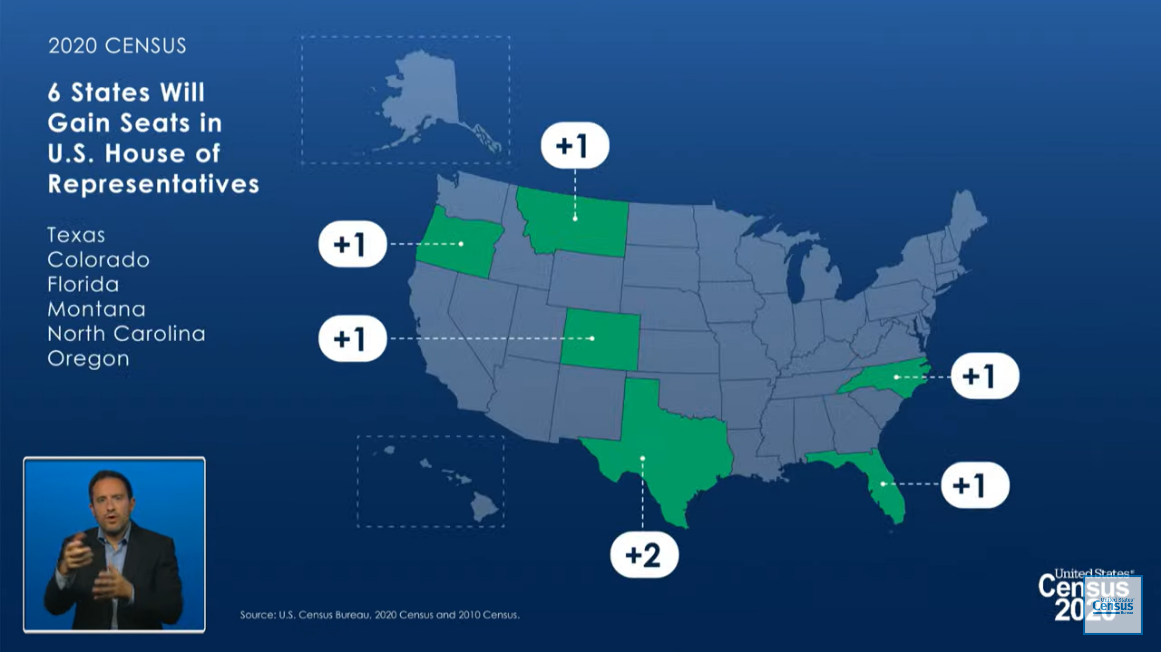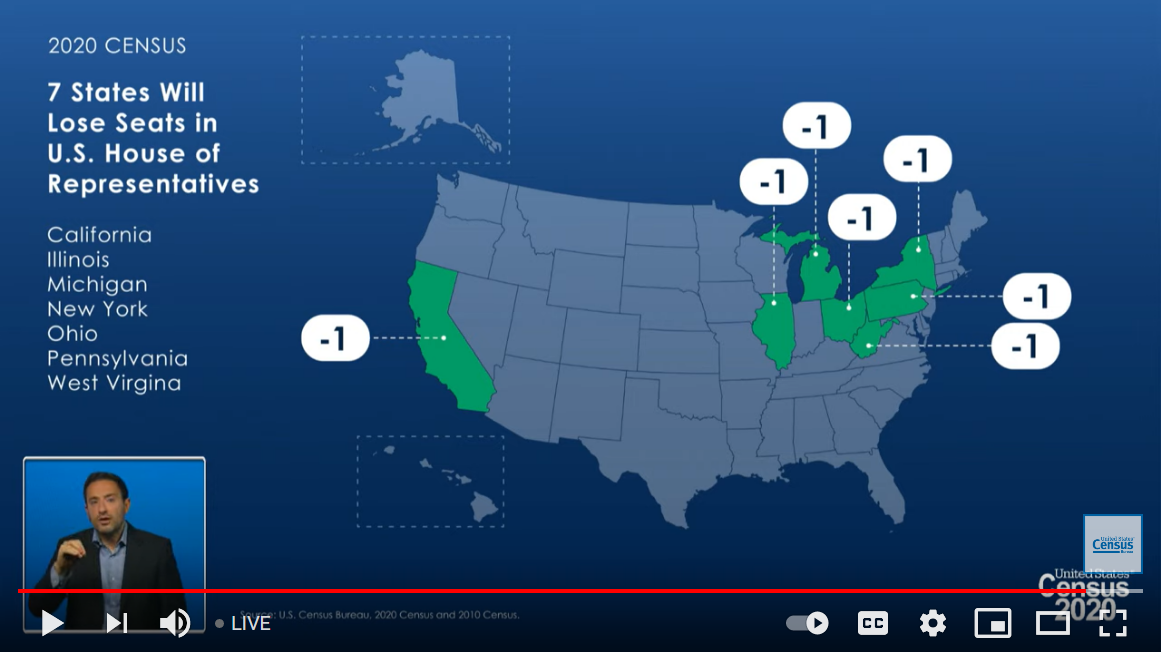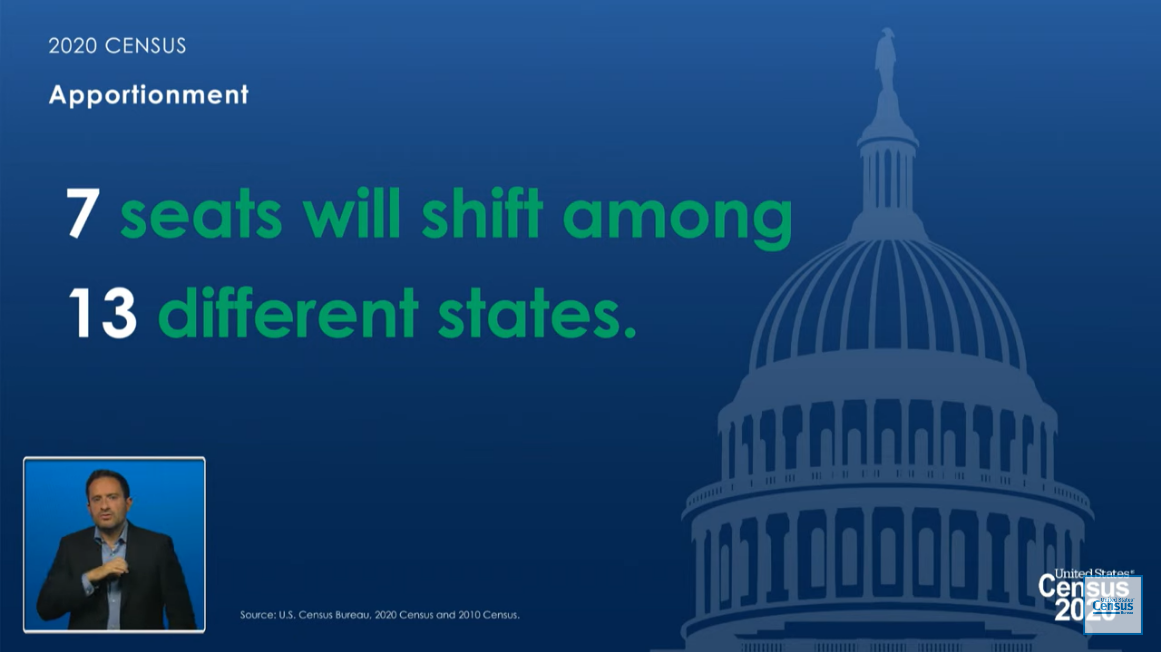Census 2020: NC gains a 14th seat in the House of Representatives

The U.S. Census Bureau just released the first look at the results from the 2020 Census. The U.S. population is now 331,449,281. The nation grew by 22,703,743 or 7.4% since 2010. This represents the second slowest decade of growth on record, just after 1930 to 1940 when the nation grew by 7.3%.

Utah (+18.4%) was the fastest-growing state, followed by Idaho (17.3%) and Texas (15.9%). Three states–West Virginia (-3.2%), Mississippi (-0.2%), Illinois (-0.1%)–and Puerto Rico (-11.8%) lost population.
North Carolina’s official population in the 2020 Census was 10,439,388*. This is an increase of 903,905 or 9.5% since 2010.
North Carolina had the 6th largest increase among the states and was the 15th fastest-growing state.
We expected a population somewhere between 10,550,000 and 10,580,000, based on estimates from the U.S. Census Bureau and population projections from the North Carolina Office of State Budget and Management. The official census count is more than 100,000 fewer individuals than we expected.
Population estimates suggest that 43 of the state’s 100 counties may have lost population over the decade. We won’t know which counties lost population—and how many people—until the next release of 2020 Census data in August/September 2021. With the state population coming in lower than expected, we could see counties with larger than expected losses, slower than expected growth, or both.
North Carolina gained a 14th seat in the U.S. House of Representatives.
We don’t really know yet. These events obviously made the Census population count more challenging, as we wrote about in the following blog posts:
More information will be released in the coming weeks and months, and we will continue to share what we learn about ways these events and others affected the overall count.
Not yet. The data released today is just state population totals. During redistricting, congressional districts are drawn to have the same population across districts. This means that each of North Carolina’s 14 congressional districts will need to have a population of 745,671. The data to redraw district lines will be released by September 30, 2021.
While we don’t yet know the 2020 Census counts for our existing districts,our projections from last year suggest that District 1 is the only district that may have a 2020 population below the ideal population size of the new districts. This means that District 1 will need to expand its current boundaries to meet the ideal population threshold. All other NC districts would need to shrink; District 2 in Wake and District 12 in Mecklenburg have the largest projected populations and would need to shrink the most.
Six states gained seats in the House:

Seven states lost a seat in the House, including California, which lost a seat for the first time ever:
According to the Bureau, New York narrowly lost its seat: had it had just 89 more people, it would have retained its House seat. This is the smallest apportionment margin observed between 1940 and 2020.

Yes – there was less movement than we anticipated prior to the release. Based on 2020 population estimates, Election Data Services projected that a total of 10 seats would change, with 7 states gaining and 10 states losing. Florida and Texas were predicted to gain multiple seats (+2 and +3, respectively) and New York was predicted to lose up to 2 seats.

Based on 2020 Census results, just 7 seats changed: 6 states gained seats and 7 states lost seats.
*Errata: This post originally reported North Carolina’s apportionment population (10,453,948) instead of the resident population (10,439,388). The apportionment total includes military and federal civilian employees living overseas. This population is used for apportionment only.
Need help understanding population change and its impacts on your community or business? Carolina Demography offers demographic research tailored to your needs.
Contact us today for a free initial consultation.
Contact UsCategories: Census 2020

The Center for Women’s Health Research (CWHR) at the University of North Carolina School of Medicine released the 12th edition of our North Carolina Women’s Health Report Card on May 9, 2022. This document is a progress report on the…

Dr. Krista Perreira is a health economist who studies disparities in health, education, and economic well-being. In collaboration with the Urban Institute, she recently co-led a study funded by the Kate B. Reynolds Foundation to study barriers to access to…

Our material helped the NC Local News Lab Fund better understand and then prioritize their funding to better serve existing and future grant recipients in North Carolina. The North Carolina Local News Lab Fund was established in 2017 to strengthen…
Your support is critical to our mission of measuring, understanding, and predicting population change and its impact. Donate to Carolina Demography today.